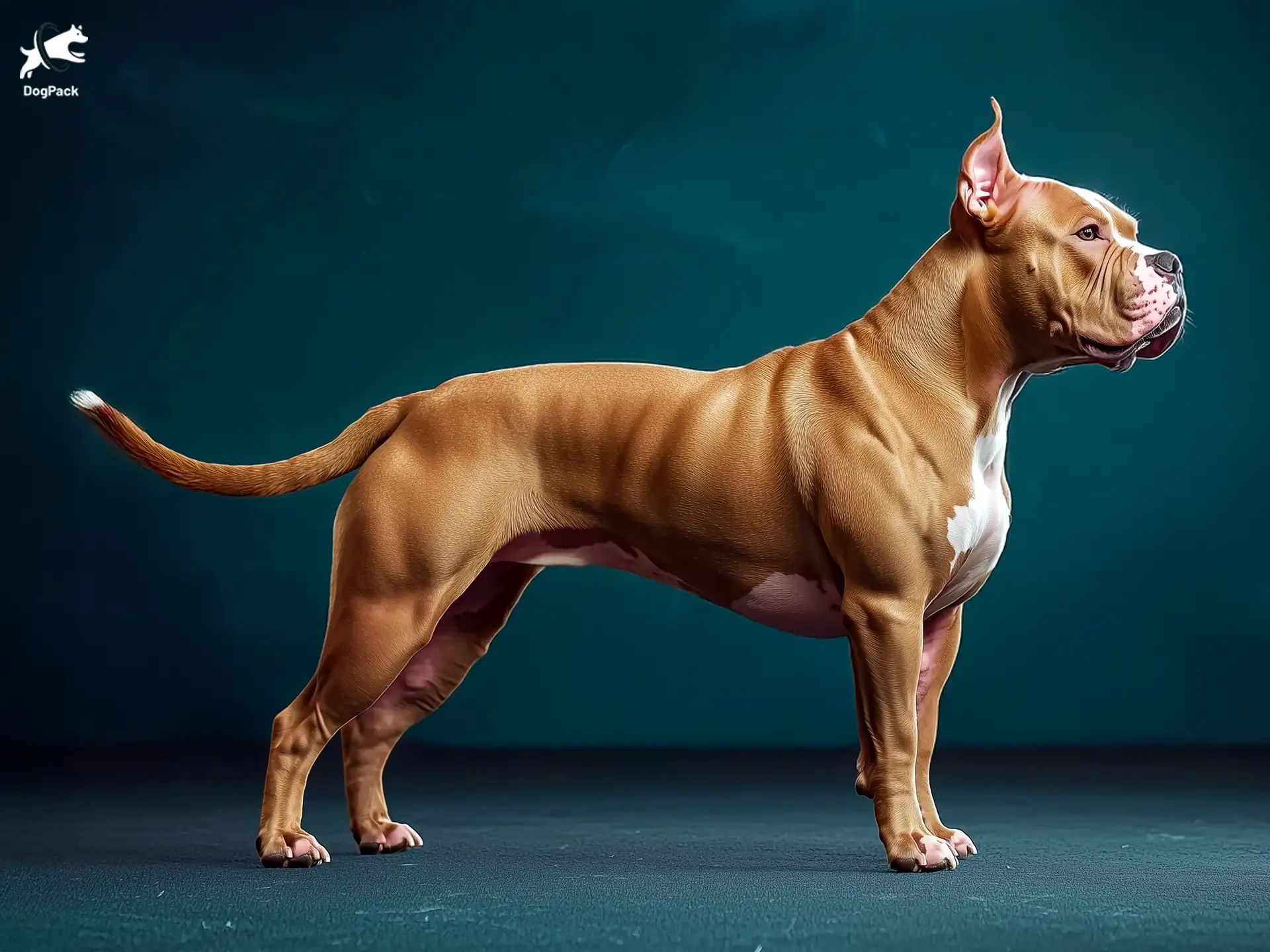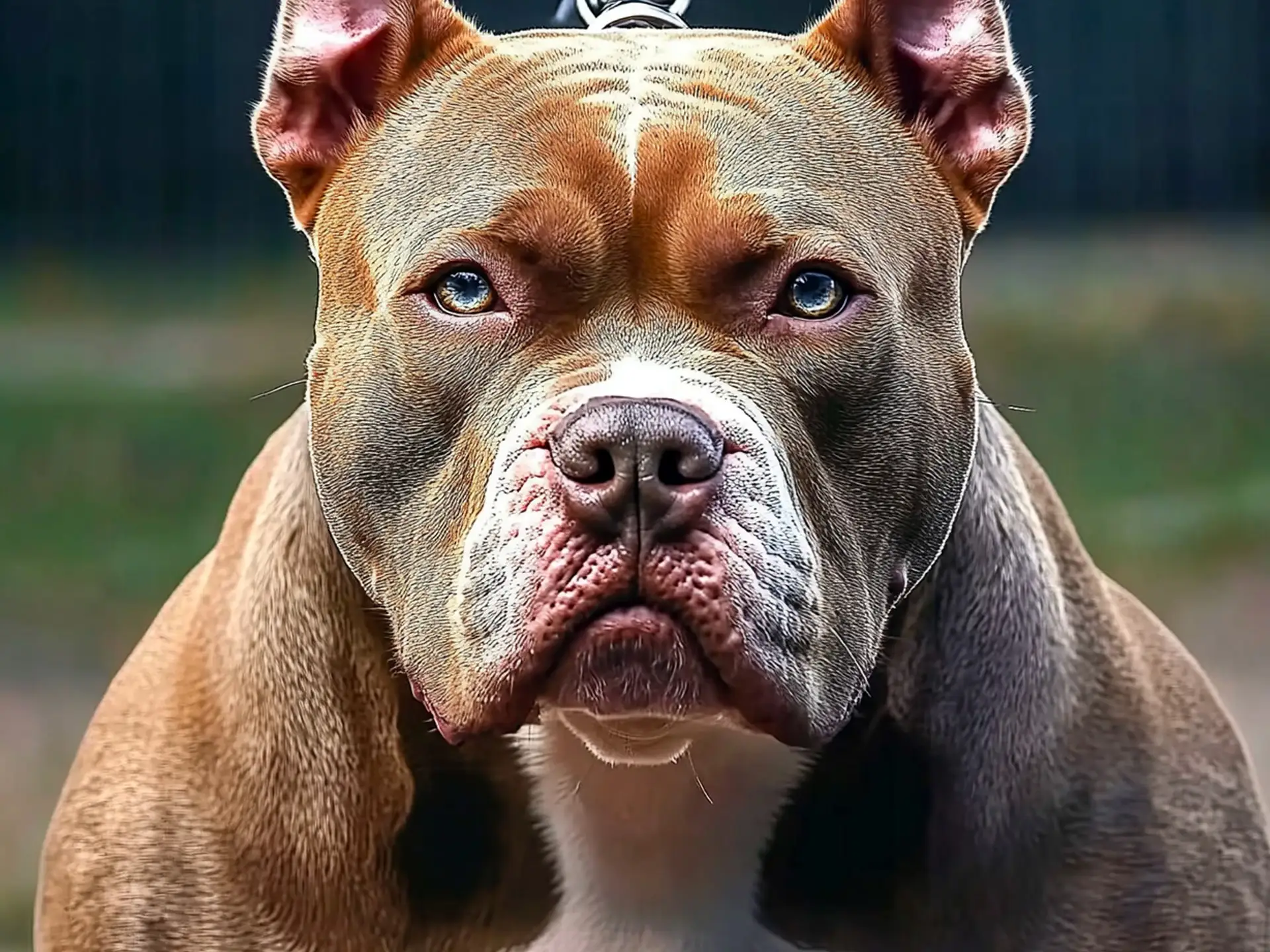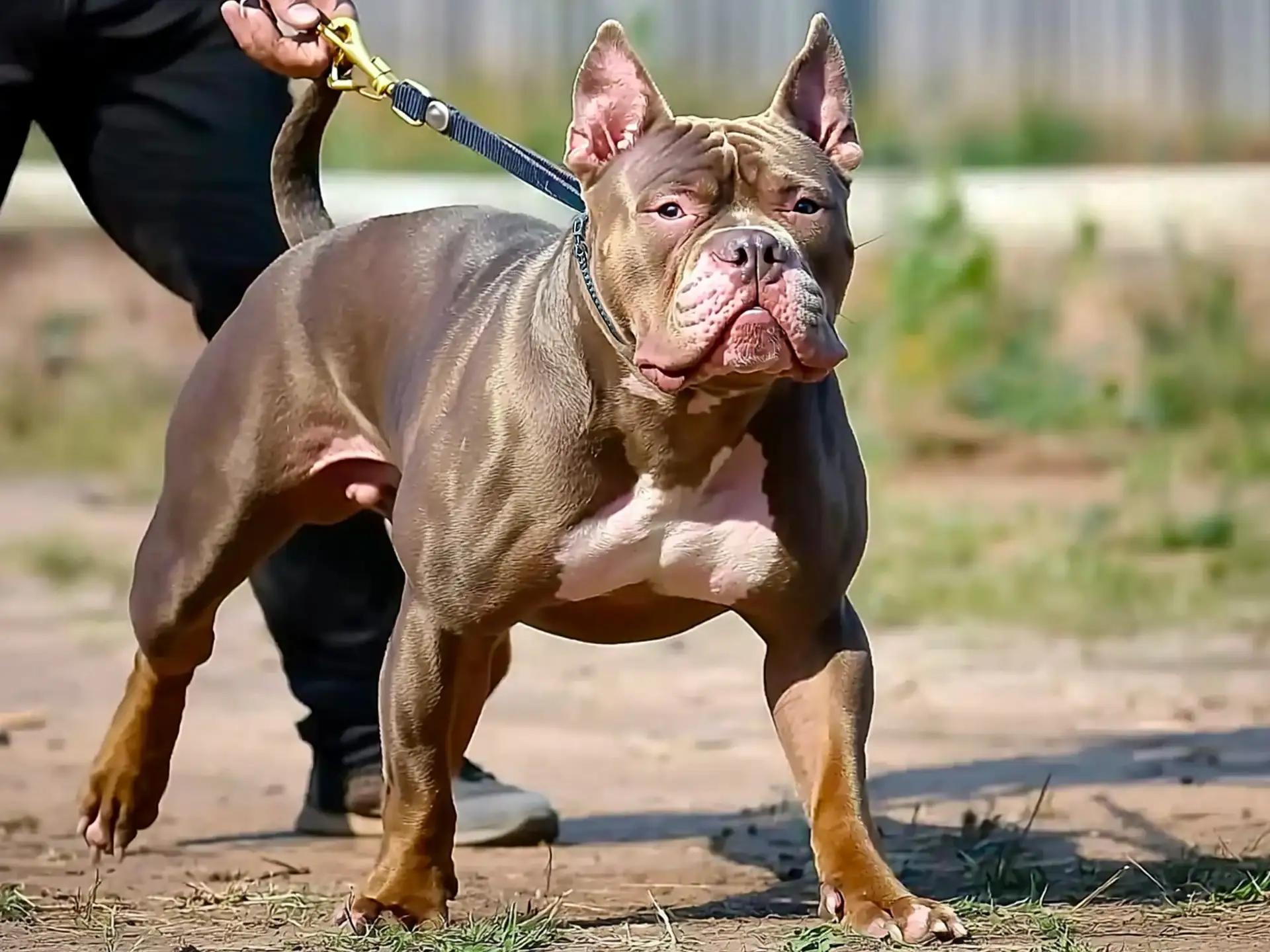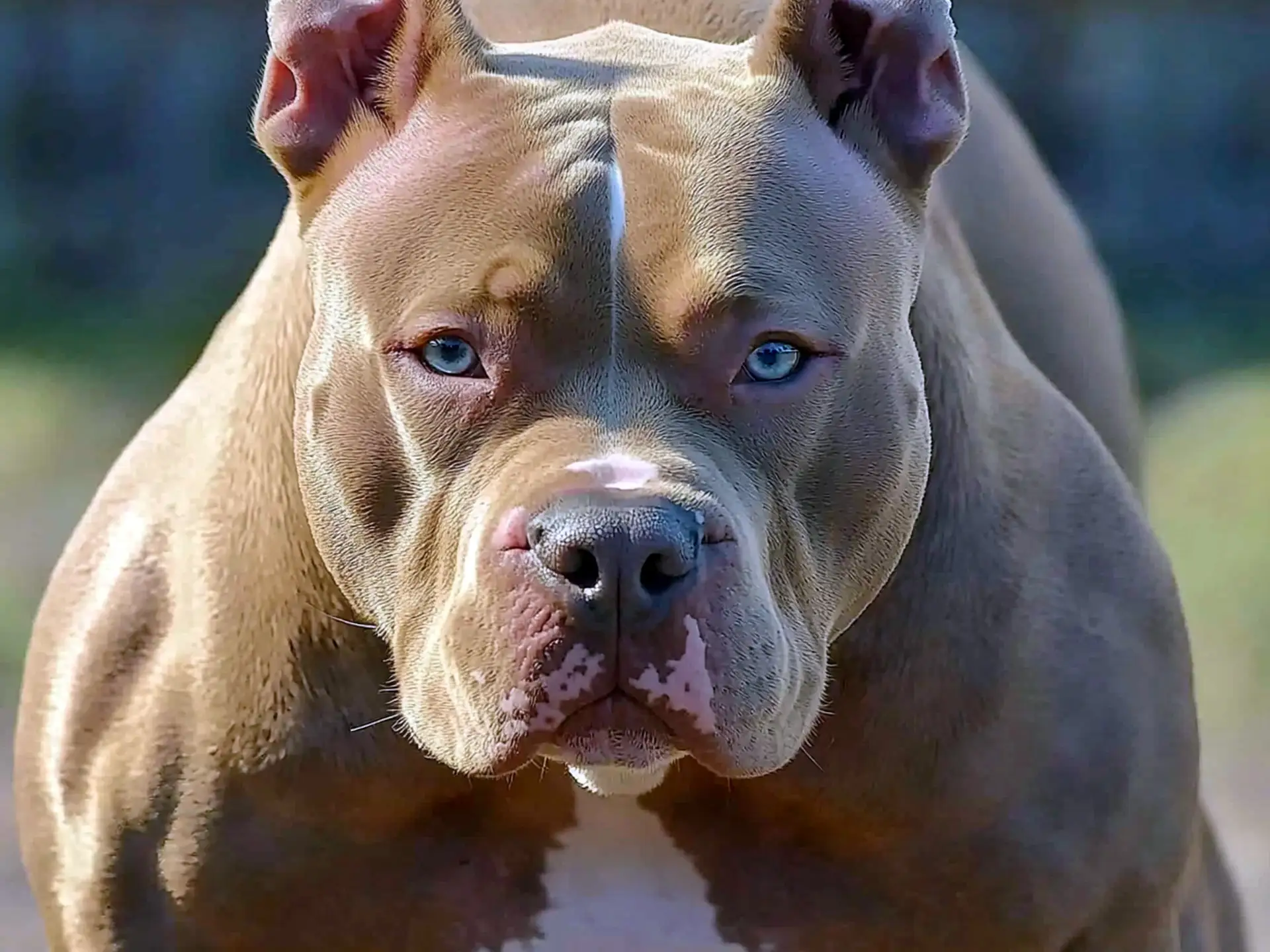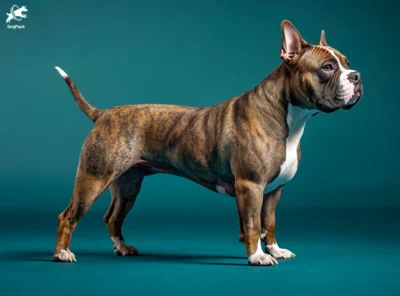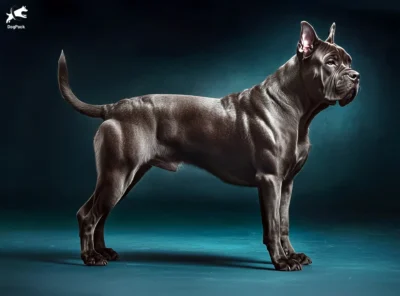Pit Monster Dog Breed Info & Overview
Ever heard of a dog so huge it seems part myth? Meet the Pit Monster: a gigantic, muscle-packed Pit Bull variant bred for extreme size and presence. While their name might sound daunting, they’re surprisingly warm-hearted with loved ones. Don’t let the tough exterior fool you—these big guys can be gentle goofballs at heart. This unique hybrid captures attention wherever it goes, turning heads with its bold stance and unwavering confidence.
Characteristics
Pictures
Breed History
The roots of what people call the “Pit Monster” can be traced back to the American Pit Bull Terrier and other imposing bully breeds. In the early days, breeders focused on producing dogs prized for their tenacity and courage. Over time, certain enthusiasts sought to create an even bigger version—ultimately leading to these hulking canines with extra muscle and a noticeable physical presence.
Despite the chilling name, the breed’s story isn’t a sinister one. Many Pit Monster lineages emerged from passionate hobbyists combining robust bloodlines, such as the American Bulldog or Cane Corso, to achieve that hefty size and formidable look. This informal breeding strategy meant there was no unified breed standard, so appearances and traits can vary from one lineage to another.
Today, the Pit Monster remains unrecognized by major kennel clubs, largely due to its mixed heritage and lack of consistent standards. Nevertheless, fans of these colossal canines often point to their loyalty and resilience as evidence of their worthiness. Whether you consider them a separate variety or just an extra-large Pit Bull, their striking build has cemented their legend among bully breed enthusiasts worldwide.
🆚 Bully XL vs. Pit Monster
| Feature | Bully XL | Pit Monster |
|---|---|---|
| Breed Category | American Bully (XL size class) | Unofficial hybrid |
| Recognition | ✅ Recognized by UKC, ABKC, and other bully breed clubs | ❌ Not officially recognized by any kennel club |
| Parent Breeds | Developed from the American Pit Bull Terrier, American Staffordshire Terrier, English Bulldog, and Mastiff types | Typically a very large American Pit Bull Terrier or a mix of Pit Bull × Mastiff/American Bully |
| Purpose | Bred for companionship, calm temperament, and impressive build | Bred for extreme size and muscle mass, sometimes for protection or intimidation |
| Temperament | Confident, stable, loyal, family-oriented (when responsibly bred) | Varies—can be loyal and protective but may have unpredictable traits depending on breeding |
| Size | Males: 20–23″ (51–58 cm), Females: 19–22″ (48–56 cm) | Can exceed 23″, often bulkier and taller than XL Bullies |
| Popularity | Well-known globally, especially in the ABKC show world | Niche following; used more in underground or backyard breeding circles |
| Health Focus | Reputable breeders aim to reduce breathing and joint issues | Health varies widely; less standardization in breeding goals |
🔍 What’s the Main Difference?
- ✅ The Bully XL is a recognized size variant of the American Bully breed, bred with a focus on temperament and structure.
- ❌ The Pit Monster (or Pitmonster) is a non-recognized “line” or nickname for oversized, heavily muscled Pit Bulls or Pit Bull mixes, often with less predictability in behavior, health, and lineage.
Temperament, Personality
Despite their intimidating frame, these dogs can be surprisingly social and affectionate. Early socialization is crucial, though, because a bored Pit Monster might become too boisterous for its own good. Owners often report that once these big softies latch onto a family, they’re as clingy as a lapdog—albeit one that’s double the size of your average pooch and sometimes forgets its own strength.
They generally thrive in households that can offer structure and plenty of attention. Children who grow up around a well-trained “Pit Monster” might find a protective, playful companion that loves to romp around the yard. At the same time, these dogs are vigilant watchdogs, quick to alert their humans when something’s amiss. It’s a balance of sweetness and courage that many owners adore.
With strangers, their reaction can range from cautious to friendly, depending on individual temperament and social exposure. They are not inherently aggressive but can become territorial without clear boundaries. In multi-pet homes, they typically do well if introduced carefully—especially with other dogs of similar size. The key is steady guidance and positive training, ensuring the Pit Monster’s imposing silhouette is matched by a well-balanced disposition.
Physical Characteristics
At first glance, a Pit Monster can look like a modern-day behemoth. Their broad chest and thick neck set the stage for an overall muscular body that’s hard to miss. Although they typically resemble oversized Pit Bulls, subtle variations emerge from crossbreeding with other robust canines like Mastiffs or American Bulldogs—resulting in different ear shapes, snout lengths, or coat textures.
Their coat is usually short and glossy, with colors ranging from brindle to fawn, black, and even patches of white. A large, blocky head is common, framing powerful jaws and expressive eyes that can shift from alert to goofy in a matter of seconds. Tall, sturdy legs end in paws that look ready to conquer any terrain, reflecting the breed’s athletic origin.
While size is the key selling point for many enthusiasts, some Pit Monsters stay closer to standard Pit Bull measurements, only tipping the scales slightly higher. Others can be impressively gigantic, surpassing 28 inches in height. No matter where they land on the spectrum, most fans appreciate the breed’s chiseled build and proud stance, which often draw compliments—and sometimes a few wide-eyed stares—from onlookers.
Health Issues
Like many large, muscular dogs, these giants can be susceptible to hip dysplasia and joint problems. If they’re carrying too much weight, joint stress can escalate quickly, leading to discomfort or mobility issues. Regular vet check-ups and monitoring for early signs of pain or stiffness can help mitigate potential damage and keep your Pit Monster feeling spry.
Because of their lineage, they may also inherit certain cardiac conditions, such as congenital heart defects sometimes seen in larger bully breeds. Stay vigilant for symptoms like fatigue or irregular breathing and consult a qualified veterinarian at the first sign of trouble. Heart screenings can be particularly useful for this breed, as early detection is often a game-changer in managing cardiac health.
Proper diet and consistent exercise go a long way in preventing obesity-related health concerns. Some Pit Monsters might experience skin allergies, possibly due to environmental factors or specific food sensitivities. Aim for a high-quality, protein-rich diet paired with routine grooming to minimize allergic flare-ups. Ultimately, working closely with a vet ensures your dog remains comfortable and healthy throughout its life.
Grooming Needs
Even though they have short coats, Pit Monsters can still shed a moderate amount. A weekly brushing helps reduce loose hair and keeps that glossy coat in top shape. Think of it as a quick bonding session—these dogs often enjoy the extra attention, so you won’t have to wrestle them onto a grooming table like you might with other breeds.
Baths needn’t be overly frequent; monthly or bi-monthly sessions generally suffice unless your canine companion rolls in something too pungent to ignore. Use a gentle, canine-specific shampoo to avoid drying out their skin. Afterward, their short coat dries relatively fast, saving you from marathon towel-drying sessions. However, keep an eye out for any skin irritations or rashes, as these can escalate if ignored.
Nail trimming, ear cleaning, and dental care round out the grooming checklist. With their large size, a Pit Monster’s nails can grow thick—allowing them to click loudly on floors if left untrimmed. Regular ear checks help detect moisture or debris, preventing infections. Also, investing in dental chews or occasional professional cleanings can go a long way in maintaining that winning Pit Monster grin.
Exercise Requirements
The Pit Monster isn’t the type to snooze away the day on the couch—though they may try if they think you’ll let them. They generally need around 1–2 hours of active exercise daily to keep both mind and body in peak condition. Energetic walks, brisk jogs, or extended play sessions can help burn off that hefty dose of energy.
Try mixing up routines with tug-of-war, fetch, or even agility drills. Although they’re not your typical agility stars, many Pit Monsters love the mental challenge of navigating obstacles. It might take a bit of persuasion to get them started, but once they catch on, it’s a great way to bond and keep them fit.
If you live near a dog-friendly hiking trail, your canine companion could be the perfect adventure buddy—just ensure they’re properly socialized around other hikers and dogs. Avoid intense exercise in extreme heat, as these bulky pups can overheat more easily. Ultimately, consistent movement helps keep a Pit Monster happy and healthy, reducing the likelihood of destructive behaviors stemming from pent-up energy.
Training Tips
Due to their size and power, consistent, positive-based training from a young age is vital. The Pit Monster may have a stubborn streak but typically responds well to praise, treats, and clear expectations. Start with basic obedience commands—sit, stay, come—and reinforce them regularly. This breed tends to thrive under confident leadership that balances kindness with firm boundaries.
Because they’re so people-focused, these dogs can develop separation anxiety if left alone for extended periods. Gradually build up alone time by offering puzzle toys or chew treats that keep them occupied. Avoid punishment-based methods; they can cause fear or aggression, which is the last thing you want in a large, powerful animal. Patience and consistency will shape a well-mannered Pit Monster.
Group training classes can be a game-changer, providing socialization opportunities and a structured learning environment. If you notice any unwanted guarding behavior or aggression, consult a certified trainer sooner rather than later. Intervening early is often the key to preventing negative habits from becoming ingrained. With the right approach, a Pit Monster can become a respectful, loyal companion who loves showing off its good manners.
Nutrition, Diet
Because the Pit Monster is heavily muscled, it benefits from a diet rich in high-quality protein sources such as chicken, beef, or fish. Look for dog foods formulated for large breeds with moderate fat levels—overly fatty meals can strain joints and increase the risk of obesity. Aim for a mix of lean proteins, whole grains, and vegetables to support muscle maintenance and overall health.
Adults typically require about 3 to 4 cups of premium large-breed kibble per day, split into two meals, although precise portions depend on individual metabolism and activity level. Some owners opt for a partially raw diet, but ensuring proper food safety and nutritional balance is crucial. It’s wise to consult a vet for personalized meal plans if you’re venturing beyond commercially formulated diets.
Watch out for rapid weight gain; extra pounds can escalate joint stress and heart issues. Keep treats in moderation—these big canines can pack on weight faster than you think. Consider incorporating joint supplements like glucosamine and chondroitin if recommended by your vet. Ultimately, focusing on balanced, portion-controlled meals gives your Pit Monster the energy it needs without overburdening its frame.
Adoption, Breeders
Because the Pit Monster isn’t officially recognized by major kennel clubs, finding one requires research and care. Some small breeder networks specialize in these massive bullies. Before buying, dig into the breeder’s reputation. Avoid anyone unwilling to share health records or show the dogs’ living conditions. Responsible sourcing is essential to ensure your puppy grows into a strong, stable companion.
If you’re considering adoption, some bully breed rescues occasionally have larger mixes that resemble Pit Monsters. These dogs may have been surrendered by owners unprepared for their size or energy. Connecting with dedicated communities like the Pit Monster Club Brasil Facebook Group can offer leads on available dogs, share care tips, and help you navigate responsible ownership.
When purchasing, look for breeders who offer health testing, clear lineage details, and early socialization. A quality breeder will ask you detailed questions and expect you to ask some in return. This ensures both dog and owner are well matched. Don’t rush—finding the right breeder or rescue takes time, but it’s the best way to welcome a healthy, confident Pit Monster into your home.
Family Pet?
In a loving, structured home, a Pit Monster can flourish as a devoted family member. They often form strong bonds with children, although supervision is essential—simply due to their size. These dogs can be playful clowns who steal shoes or hog the sofa. However, some households may find their sheer strength a bit overwhelming, especially if toddlers or frail family members are involved.
Because of their protective instincts, expect them to be on guard if they sense unfamiliar visitors. Teaching them the difference between a friend and a potential threat can be an ongoing process, but consistent positive training helps. If you’re willing to devote time and energy, the payoff is a vigilant, affectionate companion that fits right into family movie nights and backyard barbecues.
Other pets can coexist peacefully with a Pit Monster if introductions are slow and respectful. Early socialization is often the secret sauce here—mix them with calm, well-behaved animals to set a positive precedent. Over time, they can learn to share their space without turning every play session into a bulldozing spree. With patience, many households find the breed to be a loyal, larger-than-life family addition.
Right For You?
Thinking about adding a Pit Monster to your life? First, ask whether you can handle the high energy level, daily exercise, and powerful physique. They do best in homes with space to roam—small apartments aren’t ideal unless you’re committed to multiple walks and play sessions. Training needs to be consistent, ensuring they develop into the loving yet well-behaved giant you envision.
On the plus side, if you’re prepared for extra vet visits, extensive socialization, and big-dog expenses, you’ll gain a steadfast friend who craves human interaction. These dogs aren’t well-suited for folks who travel constantly or who prefer low-key pets. Overall, the Pit Monster is best for those willing to channel its strong character into a rewarding, lifelong bond built on trust and respect.
Their intense presence can be a conversation starter, and you’ll likely have curious neighbors asking about your colossal companion. However, the breed’s watchful nature and impressive strength require an owner ready to invest in training, exercise, and consistent discipline. If that sounds doable, you might find the Pit Monster to be an unforgettable partner—both fiercely protective and genuinely affectionate.
Conclusion
A Pit Monster can be a remarkable companion, blending intimidating looks with a surprisingly gentle heart. If you’re ready to meet its exercise requirements, maintain firm yet loving training, and devote consistent attention, this hybrid might just become your ultimate four-legged ally. That said, the breed’s sheer size and energy level mean it’s not for everyone. Ultimately, understanding its unique traits ensures a happier life together.
FAQs
-
What makes the Pit Monster different from a standard American Bully?
The Pit Monster is a much larger variant, selectively bred for its extreme muscle mass, broad chest, and intimidating frame. It typically outweighs standard American Bullies and has a more exaggerated structure, often pushing breed limits for size and bulk.
-
Is the Pit Monster considered a purebred or a hybrid?
The Pit Monster is not recognized as a purebred. It’s a hybrid-type bully, often created through crosses between American Bullies, Pit Bulls, and Mastiffs, selectively bred for appearance rather than pedigree.
-
How much space does a Pit Monster need to live comfortably?
Due to its massive size and muscular frame, the Pit Monster needs more space than a typical Bully breed. A home with a large yard or access to frequent outdoor time is ideal for comfort and mobility.
-
Are Pit Monsters legal in all states and countries?
The Pit Monster may fall under breed-specific legislation (BSL) in some regions due to its Pit Bull ancestry and imposing build. Always check local breed laws before acquiring one, especially in urban or restricted areas.
-
What’s the origin of the name “Pit Monster”?
The name Pit Monster is a colloquial term used by breeders and enthusiasts to describe oversized bully-type dogs bred from Pit Bull lines. It reflects their size, presence, and deviation from standard breed types like the American Pit Bull Terrier.
Breed Ratings
The Pit Monster displays keen problem-solving skills, especially when motivated by treats or praise.
Known to be bouncy and fun-loving, they often enjoy rough-and-tumble games with family members.
These hefty canines need daily exercise to thrive and avoid becoming restless or bored.
The short coat sheds moderately, but weekly brushing helps keep hair under control.
While not as high as some hound breeds, they can be triggered by small critters if not socialized properly.
Their short coat is low-maintenance, requiring only occasional baths and routine brushing.
With consistent, positive reinforcement, they learn well, though a stubborn streak can emerge.
Prolonged solitude can trigger anxiety or destructive behaviors, making them needy for human company.
Generally quiet unless they sense a threat or become bored, then they may sound the alarm.
Excess drooling isn’t common, but those with Mastiff lineage might produce more slobber.
They can mingle with other canines if introduced early and trained to respect boundaries.
Prone to joint and cardiac issues, but good care and routine vet visits help maintain well-being.

